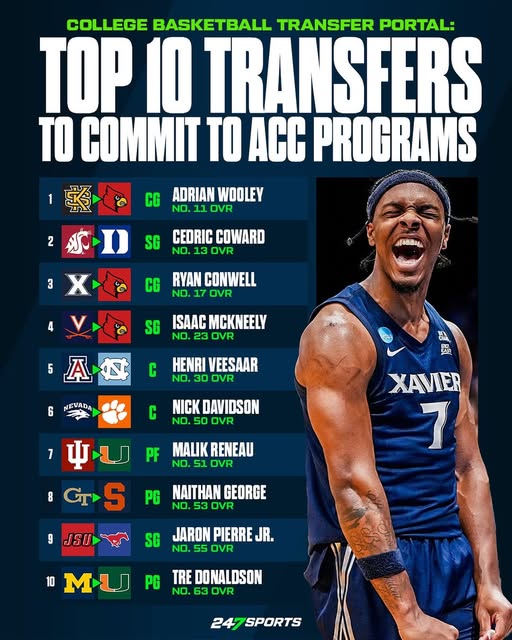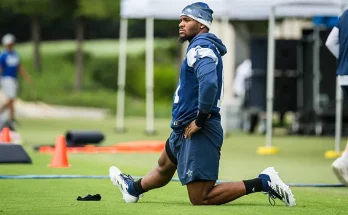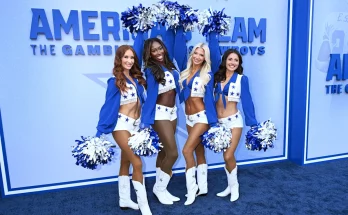The Atlantic Coast Conference is entering the 2025 season with a serious talent upgrade. Thanks to aggressive recruiting, a revamped transfer portal strategy, and some well-timed coaching moves, several programs within the ACC have reloaded in impressive fashion. From top-rated high school recruits to battle-tested transfers, the talent influx promises to reshape the competitive balance in the conference—and perhaps the national picture as well.
Leading the charge is Florida State, a program already on the cusp of returning to national prominence. The Seminoles landed five-star quarterback Darren Westbrook, a Georgia native who flipped from Alabama after a late push from head coach Mike Norvell and his staff. Westbrook, who threw for over 4,000 yards and 42 touchdowns as a senior, is already drawing comparisons to past FSU legends. Pair him with returning playmakers like Jaheim Bell and Keon Coleman, and Florida State suddenly has one of the most potent offensive arsenals in the country.
The defensive side of the ball wasn’t ignored either. The Seminoles pulled in linebacker Malik Jefferson via the portal from Michigan State, where he led the Spartans in tackles in 2024. He brings a physical edge and leadership presence that should immediately elevate the defense. Add in four-star cornerback Jonah Graves from Texas, and Florida State has effectively retooled on both sides of the ball.
Elsewhere in the ACC, Miami continues to stack blue-chip talent under Mario Cristobal. The Hurricanes made headlines by flipping defensive end Tyrone Sellers from Georgia, a top-15 national recruit who cited Miami’s NIL program and defensive scheme as deciding factors. Sellers is a game-wrecker off the edge, and his addition gives Miami a much-needed anchor on defense.
The Canes also welcomed former Oregon running back Dante Cooper, a dynamic playmaker who racked up over 1,200 all-purpose yards in 2024. His ability to contribute as a rusher, receiver, and returner gives Miami a versatile weapon who can change games in multiple phases. With quarterback Jacurri Brown returning and continued upgrades to both lines of scrimmage, Miami looks poised to be a serious contender in 2025.
North Carolina also made strategic moves in the portal, most notably landing quarterback Tyler Vaughn from Washington. Vaughn was a part-time starter last season but flashed NFL-level arm talent and athleticism. The Tar Heels needed a proven passer after the graduation of Drake Maye, and Vaughn could be the perfect stopgap while the team develops its younger quarterbacks. In addition to Vaughn, Mack Brown’s staff added wideout Quincy Barnes, a 6-foot-4 red-zone threat from Ole Miss, and linebacker Caleb Bryant from Auburn.
While the Tar Heels may not have a five-star headline recruit, their combination of experience and athleticism makes them a sneaky-good team heading into 2025.
Meanwhile, Clemson made an under-the-radar splash by shoring up their offensive line, a unit that struggled with consistency throughout the 2024 season. The Tigers added three starters from the portal, including center Will Richardson from Stanford and tackle Elijah Parker from Iowa State. The upgrades in the trenches should give quarterback Cade Klubnik more time to operate and create lanes for running back Phil Mafah. Clemson’s recruiting class also included five-star linebacker Kamari Trent, a South Carolina native who chose the Tigers over LSU and Georgia.
Trent, widely regarded as one of the most instinctive defenders in the class, adds another layer of explosiveness to a defense that already boasts several future pros. With Dabo Swinney refocusing on development and trench play, Clemson’s physical identity could return in a major way.
Louisville has quietly assembled one of the better recruiting hauls in the conference as well. The Cardinals signed top-100 cornerback Marcus Benton and flipped four-star tight end Jamal Harrington from Penn State. Perhaps more importantly, head coach Jeff Brohm used his offensive reputation to lure in former Purdue quarterback Brendan Knox, who threw for over 3,500 yards last season. The combination of Knox and Harrington could give Louisville the kind of passing attack that challenges any defense in the ACC.
Virginia Tech, under second-year head coach Brent Pry, also showed signs of progress by landing defensive lineman Isaiah Davis from Georgia Tech and adding dynamic wide receiver Kareem Haynes from the high school ranks. The Hokies are still a year or two away from true contention, but these pickups show that the foundation is being laid.
NC State made its presence felt on the recruiting trail by landing two top-150 prospects in linebacker Desmond Riley and wide receiver Julian Marks. Riley is a heat-seeking missile who brings downhill power, while Marks is a polished route runner with strong hands. The Wolfpack also addressed quarterback depth by adding former Wisconsin signal-caller Miles Granger.
Even programs not traditionally associated with top-tier recruiting made some noise. Boston College signed dual-threat quarterback Jalen Ramsey (no relation to the NFL star), who set the New Jersey state record for total touchdowns in a season. Meanwhile, Syracuse added former Texas A\&M safety Chris Dennard, giving the Orange a veteran presence in the secondary.
Wake Forest, always known for doing more with less, bolstered its defensive line with JUCO standout Marcus Tillman, a 6-foot-6 edge rusher with freakish athleticism. If he pans out, he could be one of the steals of the cycle.
Overall, the ACC has reasserted itself as a major player on the national recruiting and transfer scene. While the SEC and Big Ten continue to dominate the headlines, the ACC’s ability to retain talent and attract big names is a sign of healthy momentum. With the expanded College Football Playoff format set to launch, the timing couldn’t be better.
The 2025 season could mark a turning point for the conference. Programs like Florida State and Miami look ready to rejoin the national elite, while Clemson seeks to return to its dynastic form. Up-and-comers like Louisville and North Carolina are deep and dangerous, and even the middle tier of the conference is adding pieces that raise their competitive ceiling.
Perhaps the most exciting part is that the talent isn’t just top-heavy. There’s depth across the league, from elite quarterbacks and dominant linemen to electric skill-position players and hard-hitting defenders. This kind of balance hasn’t always been the case in the ACC, where a few dominant programs often left little room for challengers.
That dynamic is starting to shift. With the recruiting and portal wins of this offseason, there’s real parity brewing—at least among the top 6-8 teams. That means tighter games, higher stakes, and a more compelling weekly slate for fans.
If these offseason moves translate to wins, the ACC could finally shed the narrative of being a one- or two-team league. Instead, it could emerge as a deep, dangerous, and nationally relevant conference from top to bottom. Time will tell if the pieces fall into place, but for now, one thing is clear: the ACC has reloaded, and the rest of college football should take notice.



